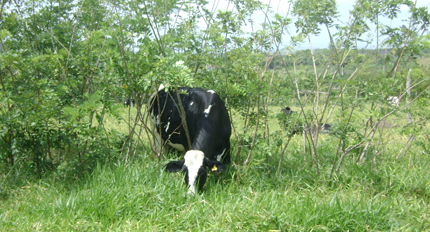5585 Guilford Road • Madison, WI 53711-5801 • 608-273-8080 • Fax 608-273-2021
www.agronomy.org
Twitter | Facebook
NEWS RELEASE
Contact: Hanna Jeske, Associate Director of Marketing and Brand Strategy, 608-268-3972, hjeske@sciencesocieties.org
Where do agricultural greenhouse gases come from, and what can be done to reduce them?
June 25, 2018 – Agronomists and farmers are working hard to improve the sustainability of agricultural land. The June 22nd Sustainable, Secure Food blog explains which greenhouses gases are released in agriculture, and efforts to reduce them.
 Agriculture is a basic need for society. “In addition to feeding the world, our current agricultural land provides fibers for clothing (cotton, hemp) and biofuels,” says blog author Sougata Bardhan. “The answers are not in reducing the amounts of food grown, but finding the best practices to do so in a way that preserves–or improves–the environment.” Bardhan is a researcher at Center for Agroforestry, University of Missouri.
Agriculture is a basic need for society. “In addition to feeding the world, our current agricultural land provides fibers for clothing (cotton, hemp) and biofuels,” says blog author Sougata Bardhan. “The answers are not in reducing the amounts of food grown, but finding the best practices to do so in a way that preserves–or improves–the environment.” Bardhan is a researcher at Center for Agroforestry, University of Missouri.
Bardhan lists examples of efforts to reduce greenhouse gases:
- Carbon dioxide is released when soils are cleared, cultivated, and tilled. Growers can use “improved methods of weed control and no-tillage planting techniques,” Bardhan says, to reduce this release. Wetland restoration on the edge of farm fields can also pull more carbon dioxide out of the atmosphere, and store the carbon in the soil.
- To reduce nitrous oxide emissions, agronomists are researching ways to grow foods with fewer fertilizers, including those with nitrogen. Cover crops that naturally add nitrogen to the soil and crop rotation are part of this effort. Precision agronomy is another method. “New high-tech instruments help growers only apply fertilizer where it is needed, resulting in less fertilizer use, which saves them money and helps the environment,” Bardhan says.
- Methane is mostly released in two ways. The first is in rice fields. Agronomists developed improved rice production methods to reduce the time needed for soil to be flooded. This reduces the amount of methane produced. Crop breeders have also developed a low-methane rice breed. The second way methane is released is directly from farm animals. Changes to animal diets are important here. In addition, grazing animals on land used for growing crops, silvopasture, also reduces methane production.
“By implementing better management practices, it is possible to reduce the level of greenhouse gasses in the atmosphere,” Bardhan says.
To read the complete blog, visit Sustainable, Secure Food at https://wp.me/p9gkW1-2n.
This blog is sponsored and written by members of the American Society of Agronomy and Crop Science Society of America. Our members are researchers and trained, certified professionals in the areas of growing our world’s food supply while protecting our environment. They work at universities, government research facilities, and private businesses across the United States and the world.